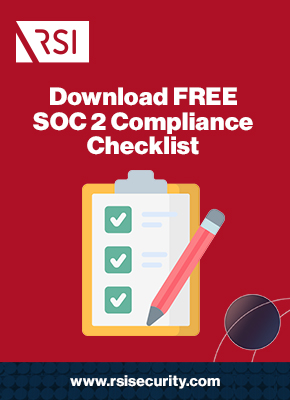The current information environment puts pressure on businesses to find partners, services, and products that build security into their foundation. With cyberattacks and data loss costing businesses millions every year, fewer are willing to acquire new software without knowing if they have implemented some security framework.
With the SOC 2 framework, you can show potential buyers that your product or service makes security a priority.
Let’s discuss.
What Is The SOC 2 Framework
The SOC 2 framework is an internal auditing procedure. This audit is to report how your organization securely manages business-critical information and client privacy. The auditing is carried out by a third party and generates reports that are unique to the organization.
Developed by the American Institute of Certified Professional Accountants (AICPA), the framework is voluntary and flexible.
The secure management of client data has five “trust principles.” These five trust principles are as follows:
- Security
- Availability
- Processing Integrity
- Confidentiality
- Privacy
In the coming sections, we will explore each of the principles in more detail.
SOC 2 Certification
The certification for SOC 2 comes from an external auditor who will report how well your organization implements controls to one of the five principles. As mentioned above, the reporting is unique to the organization. The organization decides what the controls are and how to implement them. The auditor’s reports give partners and clients information on how the provider securely manages data. As stated in the introduction, these reports are vital for larger organizations interested in onboard new SaaS but need to do their due diligence.
It also reassures clients, new and existing, that their privacy is a top priority.
Finally, auditors will develop two types of SOC reports which are:
- Type 1: details the vendor systems’ design and whether they are compatible with the trust principles.
- Type 2: outlines the system’s operational effectiveness.
Because certification is unique to each business, the AICPA has not created specific controls for each principle. So in the coming sections, we will explore the general principles and give some examples of implementation.
Assess your SOC 2 Compliance
1. Security
The security trust principle involves the business’s aspects directly related to protecting the IT infrastructure or information system. The focus is incredibly wide-reaching as implementing controls for security is a discipline in itself.
But within the scope of SOC 2, this principle alone is paramount for SaaS providers. Some examples of security controls are:
-
- Access Controls: these controls limit unauthorized access to the information system by asking users to validate their accounts through access management tools. Tools like multi-factor authentication are great at limiting brute force attacks.
- Intrusion Detection Systems: using software like Security Information and Events Management (SIEM) are ideal intrusion detection systems. They will allow you to spot a potential breach before it becomes a major headache.
- Anti-virus/malware: these types of tools are super common nowadays and should be implemented on your information system by default.
- Firewalls: using firewalls is a great way to stop unwanted internet traffic and is an excellent tool for this trust principle.
These are a few examples of how implementing cybersecurity practices and tools can help achieve SOC 2 certification for this trust principle.
But keep in mind that security frameworks can be very detailed and involved. Consult a specialist to see what framework would best suit your business.

2. Availability
The availability trust principle is all about how and when the user, client, or business partner can access the service or product you offer. Generally, this is stipulated by a contract with the interested parties.
For example, If you offer a cloud storage infrastructure, the service’s availability is essential. If it goes down, users lose access to their data, which can cause a cascading catastrophic effect.
SOC 2 certification requires the organization to put controls in place that will maintain close to 100 percent availability. Of course, keeping 100 percent uptime all the time is an unreasonable request. But with modern technology and the current state of network connectivity, it is possible to maintain constant uptime (bar any systems updates and patching).
The main adversary of availability comes from DDOS attacks, which purposefully bombard systems with high traffic in an attempt to overload and slow them down to unusable levels.
The main security tools at your disposal are:
-
- Incident Response Planning (IRP): IRP’s primarily help post-breach. But in the case of availability, a good IRP means your system should be up and running in the least amount of time possible.
- DDOS Protection: many web hosting services will offer some form of DDOS protection. But for an enterprise system, it may be worth investing in a tailored solution.
Here are a few more articles to help you learn more about SOC 2 :
3. Processing Integrity
The processing integrity principle assesses a system’s ability to achieve its purpose, i.e., does it deliver the correct data on time. Much like the General Data Protection Regulation (GDPR) principle, accuracy, this SOC 2 trust principle requires that data processing must be accurate, complete, verifiable, and authorized.
The processing integrity is not the same as data integrity. The principle simply assesses the processing of the data. So if incorrect data is input into the system, but it still manages to process it correctly (in alignment with the elements listed above), it would pass the assessment.
You can employ some technical methods to achieve good processing integrity, but passing this principle leans more toward quality assurance methods.
Using ISO frameworks of best practice in information management and quality assurance would work well in this case.
4. Confidentiality
The confidentiality of information requires limited access to a small group of people. The people that would require access to sensitive data should be limited to their job responsibility. For example, it may not be appropriate to keep business-sensitive data on a public network. Nor is it prudent to store personal data on internal storage accessible by anyone within the organization.
Some departments, or key individuals, might require access for their job function, restricting processing rights to only these personnel.
Using appropriate IT infrastructure with tiered access levels means everyone can be connected to the same network, but higher access levels require privileged accounts.
5. Privacy
The final trust principle in the SOC 2 framework is privacy. Organizations rarely chose to implement controls within this principle because of regulations like the GDPR. In most cases, if you are required to comply with regulations like the GDPR, then implementing privacy controls that need to be audited by an external party is a waste of resources. Furthermore, the GDPR is more stringent when it comes to privacy controls, and regulators have already spent time mapping them out.
However, suppose you wish to use this principle as a means of SOC 2 certification. In that case, it will involve the proper collection, retention, disclosure, and disposal of personal data in line with the organization’s privacy policy.
Besides, the privacy notice must be in line with the AICPA’s general privacy principles, protecting personally identifiable information.
Conclusions
The SOC 2 framework is a great asset when selling your SaaS services. You can benefit from knowing that buyers will need to do their due diligence when securing their business networks. You can stay ahead of the trend and become SOC 2 certified. And if you are looking for compliance advisory services, get in touch with RSI Security today.
With our experience, we can assure you that we will find and implement the proper framework for you, schedule a consultation here.
Download Our Free SOC 2 Compliance Checklist
 |
